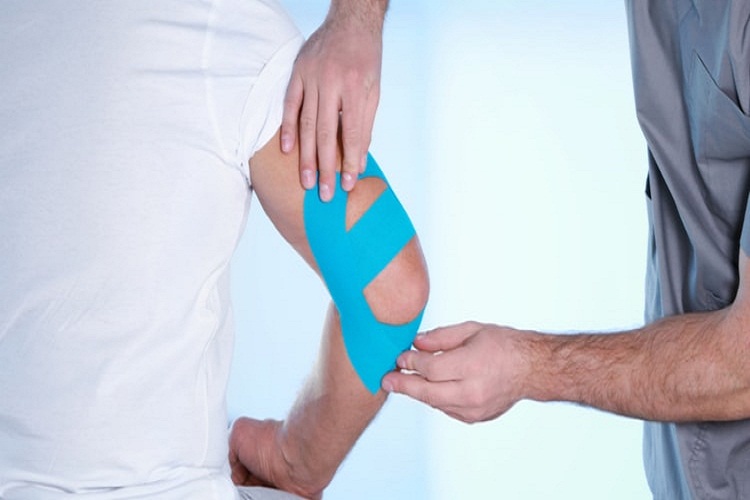Lingering Shoulder Pain After A Bike Wreck (Or Car Accident)

Shoulder injuries are integral to cycling. There is the ongoing joke among cyclists that you aren’t a “real” cyclist until you’ve broken your clavicle.
The clavicle is especially vulnerable, as cyclists tend to instinctively brace with an outstretched hand, which transfers the impact up to the weaker clavicle bone.
Even cyclists who have the forethought to “tuck and roll,” broken bones, bruises, and torn ligaments are not uncommon.
There are many small pieces, and an injury to any one of them can cause ongoing pain.
I’m going to assume that you’ve been in contact with your appropriate doctor, physical therapist or chiropractor following your incident. The shoulder is a complex structure, and multiple areas can cause problems as you recover.
Some shoulder pain will require surgery to repair it. However, even after surgery, there are those who will always have some level of pain.
After Dave Henly’s bike ran into a car that was turning into his right-of-way, he dealt with differing levels of shoulder pain for 18 months following the incident.
“After seeing multiple specialists and running scans on the affected shoulder, I was sent to work with a physical therapist,” Dave recalls“After several months, the therapist got me to a level of functioning where I had little to no pain. As I was nearing my end of care, he began focusing on my “self-care” and how I would be required to maintain the work he had begun.”
Scar Tissue That Causes Pain
What Physical therapists know is that cyclists often suffer from deep scarring with these injuries. This scarring will attempt to organize the fascia and muscle around it, “pulling” the fascia into a painful configuration.
To keep the full function of my shoulder, stretching it on a regular basis becomes essential, as well as working it through a complete range of motion on a regular basis.
Once injured, these practices must be used throughout the rest of the cyclist’s life. During periods where they sit more or are unable to stretch, it is not uncommon for the pain to increase.
How To Encourage Healing Of Scar Tissue

Here are some tips that are helpful in managing chronic shoulder pain.
- Drink An Excessive Amount Of Water
Eight to Twelve cups of water are ideal for most people. Dehydration makes it harder for the fascia to run smoothly and can lead to more pain around scarred areas.
Staying hydrated from morning to night is the foundation for everything else we present here.
- Stretch Throughout The Day
Finding stretches that work for your pain will be the second piece of the puzzle. There are some stretches that will simply come naturally to you. Those moves you can make that help you feel better.
However, researching yoga moves and working with a physical therapist or personal trainer can help you create more ideas and play with different angles to stretch in a healthy, deep manner.
One of the best stretches is the doorway stretch that allows you to lean in a doorway and stretch the shoulder blades deeply. This is one of those moves that is so helpful that every desk jockey should be using it regularly.
- Lift Weights
Weightlifting is the perfect way to move your shoulder throughout a complete range of motion and strengthen supporting muscles. Creating a regular workout plan where you can hit your shoulder muscles twice a week can improve your back and reduce the day-to-day pain that you are struggling with.
If you are actively dealing with pain, try going for lighter weights and higher reps of 12 or 15. Move slowly and intentionally through the complete range of motion and allow the muscles to experience the deep work of the weight.
Rowing machines are also excellent for these rehabilitation exercises, thanks to their low-impact and smooth motions.
If well-hydrated, this can help smooth out the fascia and create healthy, working muscles that build strength around the injured area.
- Massage and Acupuncture

Fascia is one of the least understood organs in the body. We know that healthy fascia allows the athlete to perform at their peak and that damaged fascia can hold an athlete back.
Beyond that, there is a large amount of research being actively conducted to understand the connection between pain and fascia better.
One thing they are relatively certain of is that fascia can lead to chronic back pain. Sometimes un-diagnosable pain resolves after fascia-treating methods are deployed.
Regular, healthy activity is the number one factor in maintaining healthy fascia. Outside of that, two other methods have been identified that seem to treat fascia-related problems.
Massage and acupuncture are the two techniques that have been proven to help heal fascia.
For massage, find someone who specializes in deep pressure such as sports massage or “Rolfing.” These techniques push the water out of the fascia, which then causes the fascia to “super hydrate” and with a result in healing and less pain.
Acupuncture has also been measured to reduce pain, thanks to the way the fascia respond when strategically pricked by a pin.
Both of these techniques are tools you can use to reduce pain, especially if the other methods aren’t “cutting it.”
Lingering shoulder pain can be one of the most frustrating things to deal with as an athlete, and, without a viable treatment plan, can lead to being forced out of the sport you love. Hopefully, this understanding that your shoulder needs a lifetime of treatment instead of a “simple fix” will help you find a manageable plan that keeps you on track with your goals.
Here is a video review on how to fix shoulder pain
